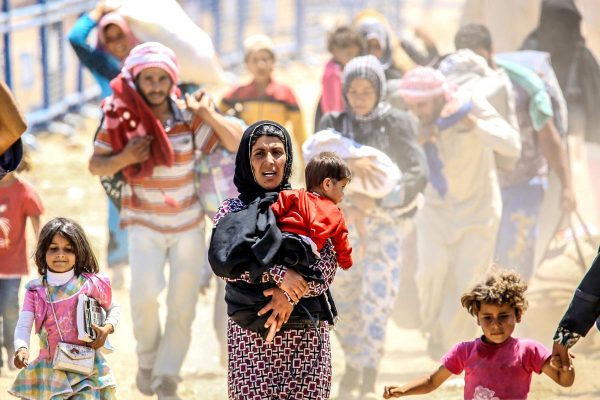COVID-19: Unhoused and Unprotected
When the COVID-19 pandemic spread to the United States in the early spring of 2020, a panic swept the nation even faster than the disease itself. In a frenzy, people bought out the cleaning supply sections of stores, stocked up on masks, and hunkered down in their homes to protect themselves and their families and wait out the virus. Yet, for the nation’s unhoused population, safely hiding away from the virus inside their homes was not an option. According to the New York Times, as the pandemic began, many health officials feared that the virus would run rampant through America’s nearly half million unhoused people confined to shelters and streets. Almost a year later, the pandemic has not been as ruthless to unhoused populations as experts had initially feared, with Dr. Helen Chu, an infectious disease specialist in Seattle, Washington, remGregory Bull/Associated Pressarking to the New York Times, “I had assumed it would be terrible in the homeless population because of how other viruses circulate… It pretty much has turned out to be not as bad as I would have thought.” However, that is not to say that America’s unhoused population has not faced a multitude of challenges during these trying times.
Numbers from the Department of Housing and Urban Development’s 2020 Continuum of Care Homeless Populations and Subpopulations Reports estimate that 385,840 Americans are currently unhoused. To put that number into perspective, the United States has a total population of around 330 million, meaning that around seventeen out of every 10,000 people are unhoused. However, the malignant economic effects of COVID-19, such as a rise in unemployment and subsequent evictions, only served to exacerbate the already rising numbers of unhoused populations in 2020. In addition, as both a cause and effect of homelessness, unhoused populations suffer from a variety of health challenges. According to a 2020 report from the Department of Health and Human Services, “People with a history of homelessness are much more likely to have chronic respiratory conditions such as chronic obstructive lung disease (23%) or asthma (24%). People with a history of homelessness are also much more likely to have been diagnosed with tuberculosis than the general population.” In addition, unhoused populations were also reported to have higher rates of diabetes, serious heart conditions, and kidney disease than housed populations, and comparably high levels of obesity and high blood pressure, all of which are comorbidities that increase the risk of catching COVID-19, the severity of its symptoms, and the possibility of death from complications related to COVID-19.
Increased risk factors coupled with a lack of proper healthcare would be enough to drive any population to crisis during a pandemic. However, America’s unhoused population has the issue of a lack of proper shelter and resources as yet another challenge. Many unhoused people turn to shelters for protection and solace from life on the streets. However, in the wake of health concerns, lack of funding, and government-mandated restrictions on capacity since early 2020, many homeless shelters or resource centers such as food pantries and soup kitchens have been forced to limit the amount of unhoused people allowed within their doors or even shut down entirely, leading to more unhoused people having to spend their nights on the streets. This lack of shelter became a major concern during winter months, as death due to exposure and hypothermia is prevalent within unhoused populations as temperatures reach dangerous lows. In a full city-wide or even national lockdown put in place to hinder the spread of COVID-19, there is yet another problem facing those experiencing homelessness for many of the same reasons. Currently, most areas do not have emergency plans for the creation of shelters and transportation for those experiencing homelessness in a crisis such as COVID-19. In addition, the closure of public spaces where such crucial resources as running water and electricity are available to unhoused people free of charge during a total lockdown has served to be a major detriment to unhoused populations who have, as a result, been left without such necessities, especially without the existence of a plan or substitute existing to alleviate the loss of resources that has occurred throughout the pandemic. Yet the creation of emergency shelters or temporary placements still may not even serve to properly aid and protect unhoused populations, as according to the US National Library of Medicine, “Lockdowns and disease containment procedures might also be deleterious to the mental health of people experiencing homelessness, many of whom have fears around involuntary hospitalisation and incarceration.”
Above all else, the gravest challenge facing unhoused populations during the COVID-19 pandemic may very well be the spread of COVID-19 itself. As unhoused people do not have a permanent source of shelter, many are forced to either travel between homeless shelters and resource centers or seek shelter out on the streets. Such open travel only serves to increase the spread of COVID-19, as one unhoused individual infected with COVID-19 may travel to multiple locations while contagious and, as a result, infect multiple different populations. In addition, the transient nature of most unhoused individuals renders contact tracing virtually impossible, as it is difficult to determine in detail where an individual has been and contact those whom the infected individual has come into contact with. Yet another risk to unhoused populations in regard to COVID-19 is the discovery that it can be spread rapidly through the fecal-oral route. If an unhoused individual or population drinks or comes into contact with a water source that has been contaminated, COVID-19 could easily spread throughout the local unhoused community. Finally, there is the issue of identifying and treating COVID-19 itself. While some homeless shelters and resource centers may be able to test for COVID-19, it is impossible to serve the whole unhoused community, meaning that it is wholly unknown how many unhoused individuals have been infected and are suffering from COVID-19 while on the street. In addition, if an unhoused individual were to test positive for COVID-19 at a shelter or resource center, the necessary quarantine measures would become extremely difficult to create. Homeless shelters already strained by an influx of unhoused people and lack of additional aid during the pandemic would find it difficult to create the conditions of isolation required for a proper COVID-19 quarantine, and improper quarantine measures may mean that more inhabitants of the shelter would become infected.
The COVID-19 pandemic has served to highlight the inequity of unhoused communities through their lack of access to proper resources and healthcare. Kevin, an unhoused individual whose family was displaced after he was laid off from his job at the beginning of the pandemic, explained that he has been “receiving a lot of that [personal protective equipment]” as donations, and believes that the unhoused community can best be served during the pandemic through the donation of, “food, canned foods.” Dangers of everyday life for unhoused individuals has also been highlighted through the rampant spread of COVID-19 through unhoused communities. Yet, the crisis suffered by unhoused communities during the pandemic offers hope for the future as it has illuminated the weak points of the nation’s systems for aiding unhoused individuals, showing promise for the rectification of such issues and an increase in awareness and preparedness if a health crisis such as COVID-19 were to break out again.
Hi, my name is Sophia Strocko, and I am currently a senior at Sandy Spring Friends School. This is my third year at Sandy Spring and third year on Wildezine....






